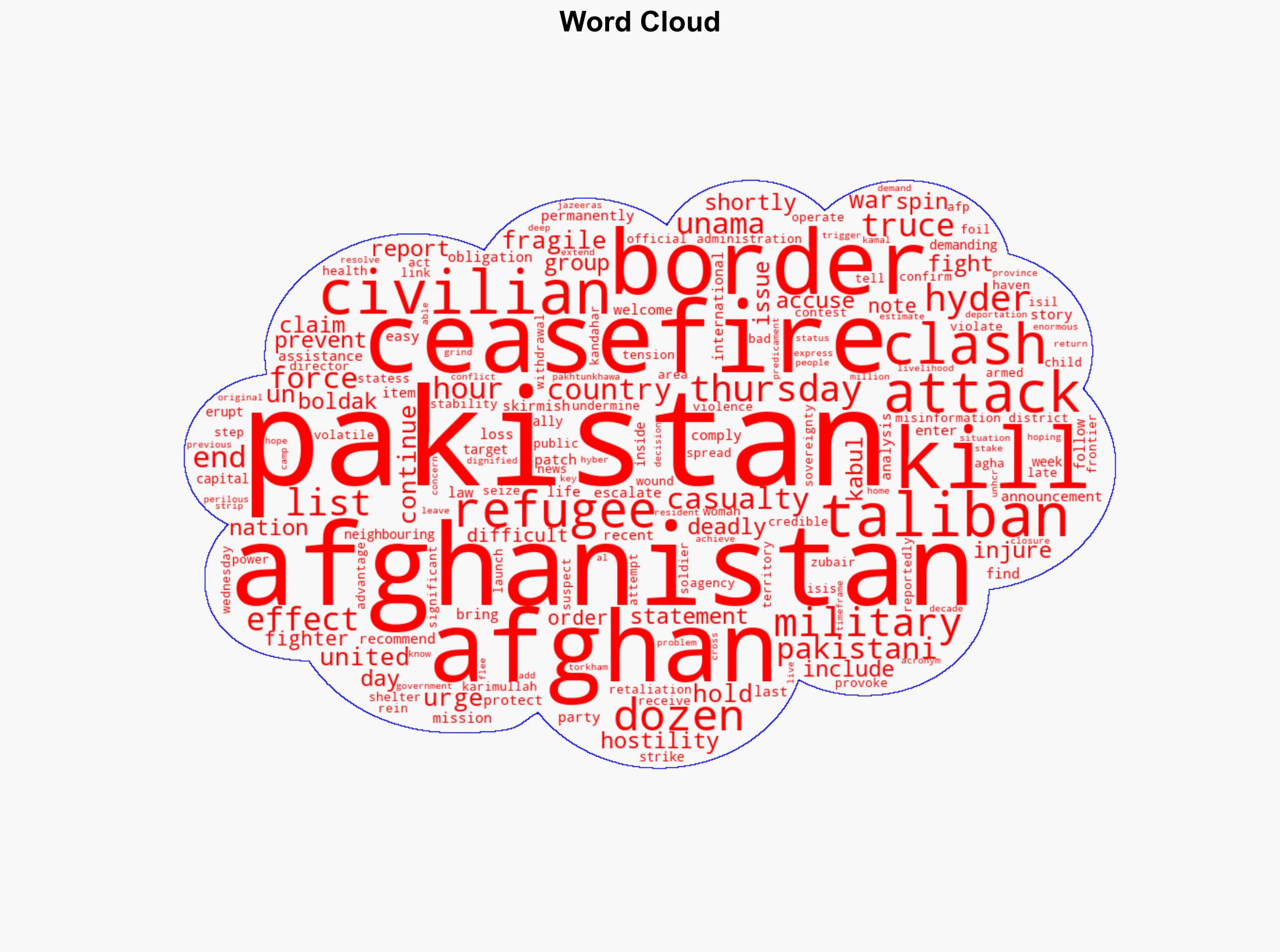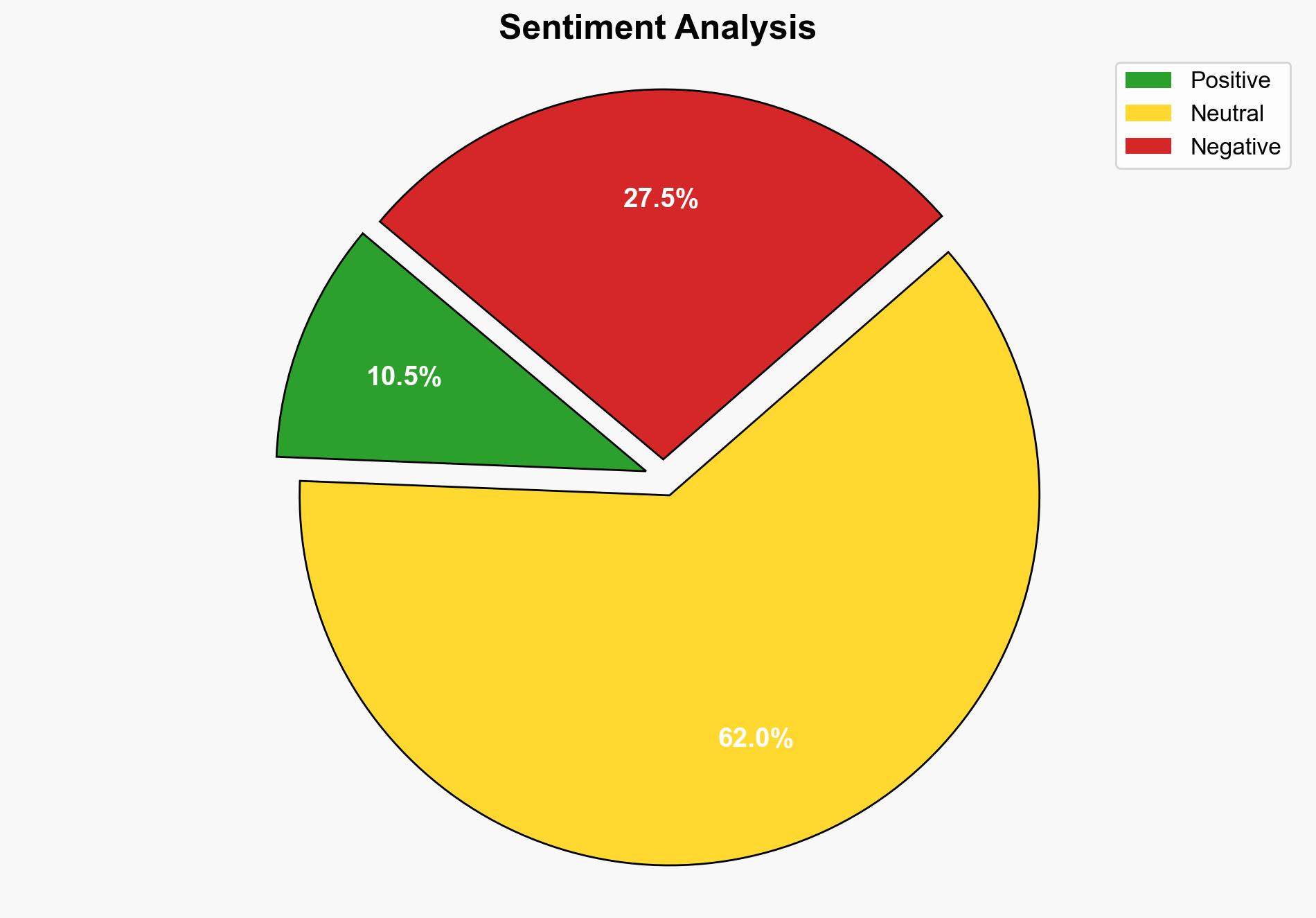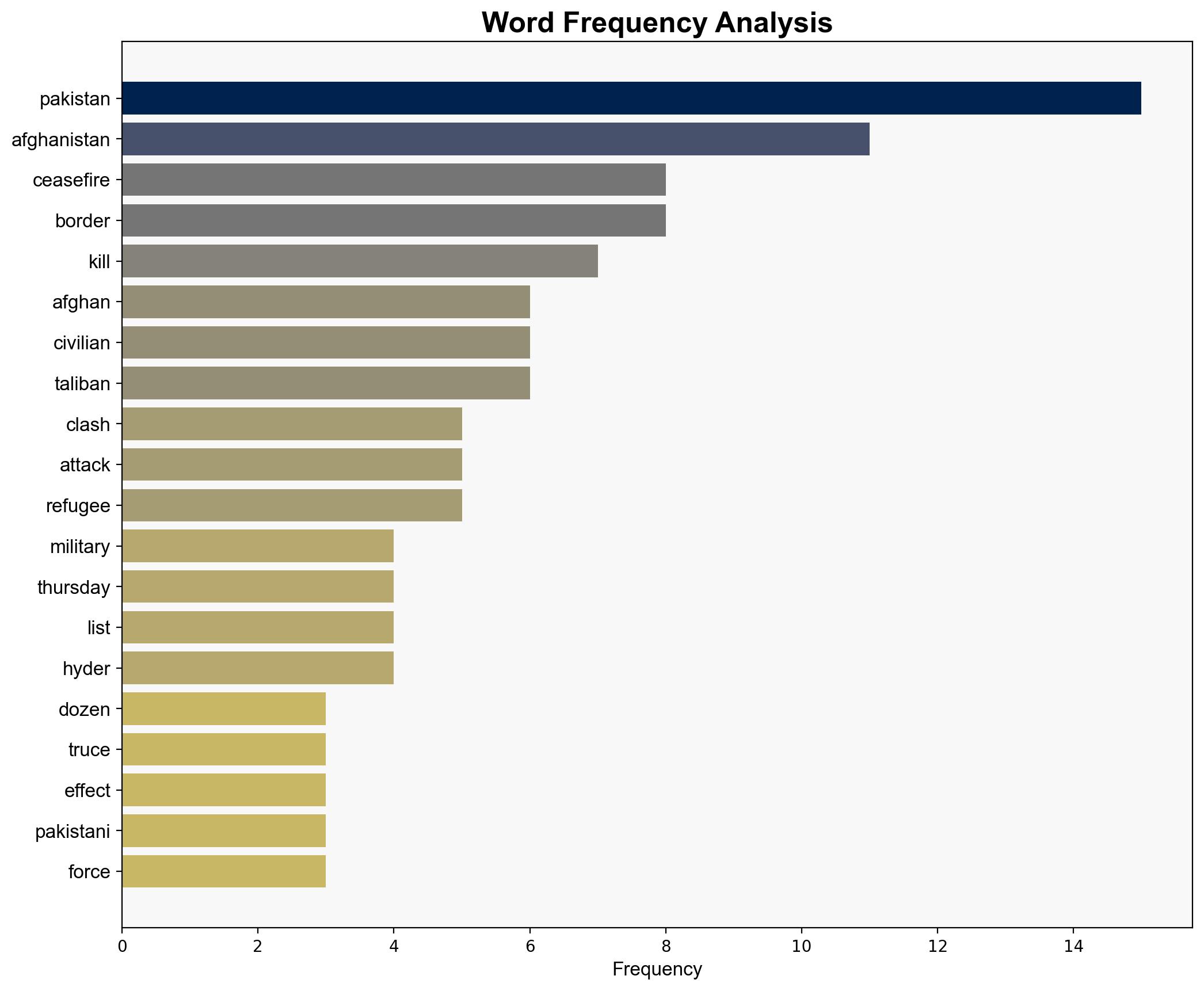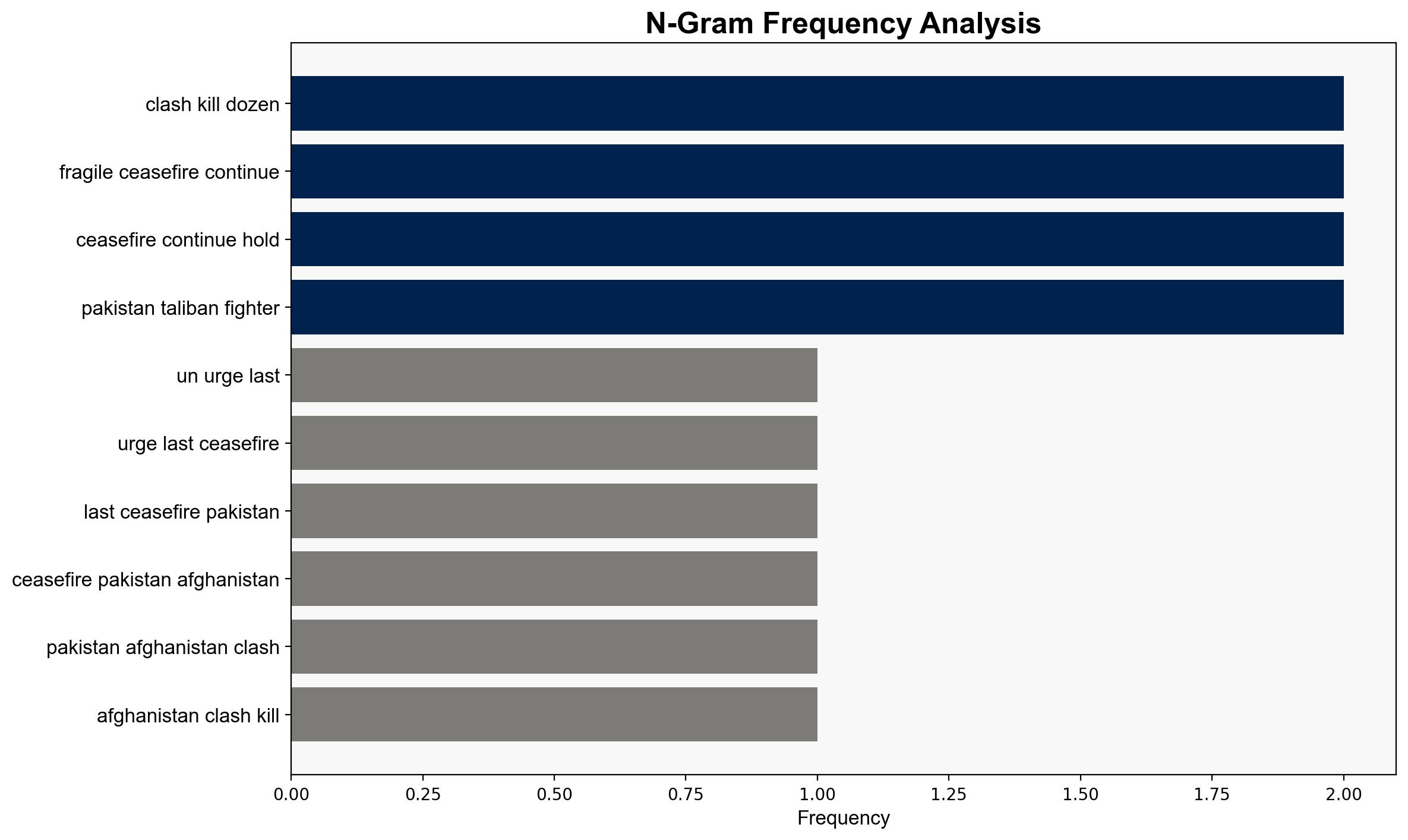UN urges lasting ceasefire after Pakistan-Afghanistan clashes kill dozens – Al Jazeera English
Published on: 2025-10-16
Intelligence Report: UN urges lasting ceasefire after Pakistan-Afghanistan clashes kill dozens – Al Jazeera English
1. BLUF (Bottom Line Up Front)
The most supported hypothesis is that the recent clashes between Pakistan and Afghanistan are primarily driven by Pakistan’s demand for the Afghan Taliban to control militant groups operating from Afghan territory. Confidence Level: Moderate. Recommended action is to facilitate diplomatic engagement between Pakistan and Afghanistan, with international mediation to ensure compliance with ceasefire agreements and address underlying security concerns.
2. Competing Hypotheses
1. **Hypothesis A**: The clashes are a result of Pakistan’s strategic pressure on the Afghan Taliban to curb militant activities originating from Afghanistan, specifically targeting groups like the Pakistan Taliban.
2. **Hypothesis B**: The clashes are primarily provoked by internal Afghan dynamics, with the Taliban using border tensions to consolidate power domestically and distract from internal challenges.
Using ACH 2.0, Hypothesis A is better supported due to Pakistan’s explicit demands and military actions targeting Afghan territory, indicating a strategic motive to influence Afghan Taliban policies. Hypothesis B lacks substantial evidence of internal Afghan motivations being the primary driver.
3. Key Assumptions and Red Flags
– **Assumptions**: It is assumed that Pakistan’s military actions are solely in response to militant threats and not influenced by other geopolitical interests.
– **Red Flags**: The potential for misinformation or propaganda from both sides, as accusations of territorial violations and misinformation are exchanged.
– **Blind Spots**: Limited insight into the internal decision-making processes of the Afghan Taliban and the extent of their control over militant groups.
4. Implications and Strategic Risks
– **Escalation Risk**: Continued skirmishes could lead to broader military conflict, destabilizing the region further.
– **Geopolitical Impact**: Strained relations may affect regional alliances and international diplomatic efforts.
– **Humanitarian Concerns**: Increased civilian casualties and refugee displacement could exacerbate humanitarian crises.
– **Economic Consequences**: Prolonged conflict may disrupt trade routes and economic stability in both countries.
5. Recommendations and Outlook
- **Diplomatic Engagement**: Encourage dialogue facilitated by neutral international parties to address security concerns and reinforce ceasefire agreements.
- **Monitoring and Verification**: Implement mechanisms for monitoring compliance with ceasefires to prevent misinformation and accidental escalations.
- **Scenario Projections**:
- **Best Case**: Successful diplomatic intervention leads to a lasting ceasefire and cooperation on counter-terrorism.
- **Worst Case**: Escalation into a full-scale conflict, destabilizing the region and increasing refugee flows.
- **Most Likely**: Continued sporadic clashes with intermittent ceasefires, requiring ongoing international mediation.
6. Key Individuals and Entities
– **Karimullah Zubair Agha**: Director of Public Health in Afghanistan, reported on civilian casualties.
– **Kamal Hyder**: Al Jazeera correspondent reporting on the situation at the Torkham border crossing.
7. Thematic Tags
national security threats, regional focus, counter-terrorism, geopolitical stability




